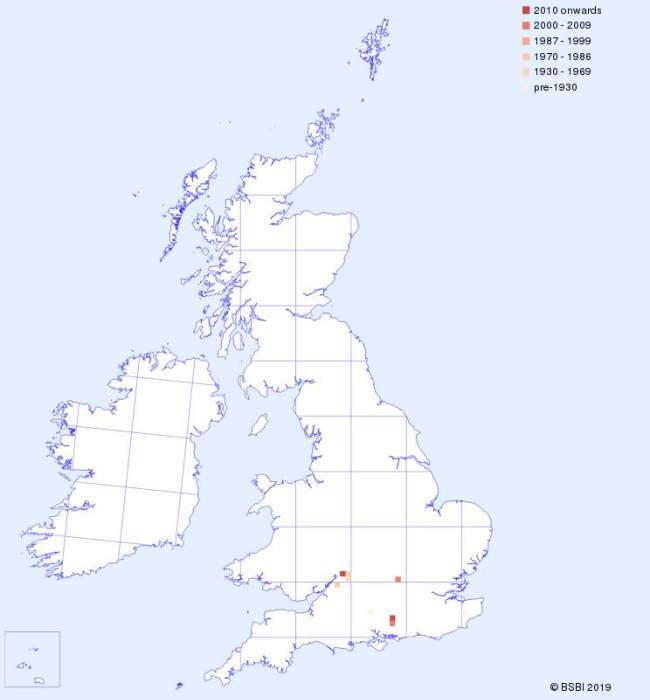Red Helleborine is one of Britain's rarest wild orchids (classified as Critically Endangered), and plants are now confined to just three sites in southern England. Seemingly favouring ancient beech woodlands on chalk or limestone, this orchid is nonethless affected by light levels and will not flower if the canopy becomes too dense. Often found in clearings within woodland where there is more light, the plants are equally susceptible to the rank growth and brambles which sometimes occur in lighter positions, also resulting in a failure to flower. In other parts of its range on Mainland Europe, Red Helleborine is often found on wooded banks and roadside verges where it receives direct sunlight for several hours a day but where the competing vegetation is kept tightly under control. When it does bloom the lovely pink flowers of Red Helleborine appear between mid-June and the end of July, usually peaking in the first two weeks of July. Elsewhere in Europe this plant is found from southern Scandinavia and Finland in the north to as far south as the Mediterranean Region.
| Distribution Map | Key Features | |
 |
Records for Red Helleborine from BSBI are shown on the map with most recent in front. (Hover the mouse over the small map to expand it.) |
Plant: 15 to 60cm in height; stem brownish-green and darker towards the top, ridged, hairy towards the tip. |
Image Gallery for Red Helleborine Cephalanthera rubra
| Pollination | Taxonomy & Hybrids |
The flowers are pollinated by small solitary bees, despite no nectar being produced. |
The specific name rubra means red. |
Articles about Red Helleborine in JHOS
